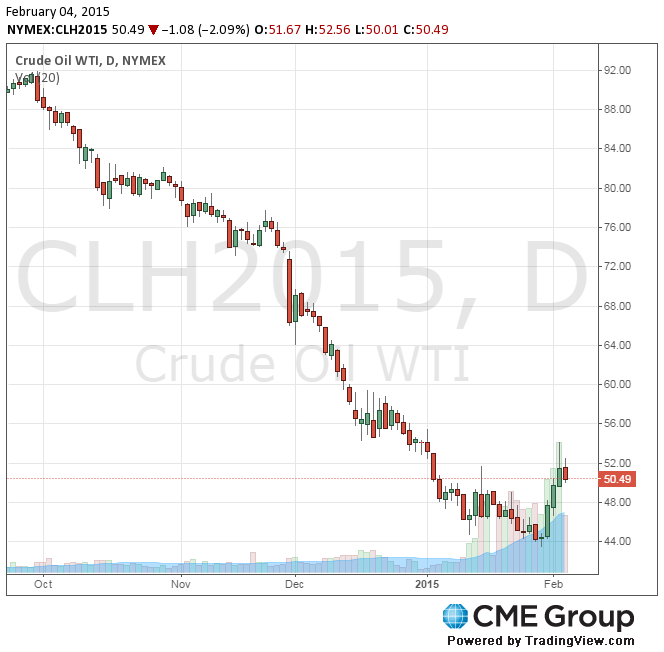- Оil extended losses
Market news
Оil extended losses
Crude oil extended losses after an Energy Information Administration report showed U.S. inventories grew more than expected last week.
The market halted the biggest four-day rally since January 2009 as stockpiles advanced 6.33 million barrels to 413.1 million, the highest level in at least three decades. Analysts surveyed by Bloomberg had expected a gain of 3.25 million. Talks were scheduled to resume on Wednesday to resolve the biggest U.S. oil-worker refinery strike since 1980.
"The rebound is coming to an end," said Gene McGillian, a senior analyst at Tradition Energy in Stamford, Connecticut. "We are still going to grind lower until we get a real indication that production levels are starting to drop."
Oil had rebounded from the lowest level in almost six years as companies including BP Plc, Royal Dutch Shell Plc and Chevron Corp. reduce investments in response to the market's collapse. Brent closed more than 20% above its Jan. 13 settlement on Tuesday in London, meeting a common definition of a bull market.
West Texas Intermediate for March delivery decreased US$2.87, or 5.4%, to US$50.18 a barrel at 10:36 a.m. on the New York Mercantile Exchange. It gained 19% in the four days to Tuesday, settling at US$53.05, the highest close this year. The volume of all futures traded was about 47% above the 100- day average for the time of day.
Brent for March settlement slid US$2.20, or 3.8%, to US$55.71 a barrel on the ICE Futures Europe exchange in London. The European benchmark crude traded at a premium of US$5.40 to WTI on the ICE.
U.S. crude inventories climbed for a fourth week to the highest level in weekly data compiled by the EIA since August 1982, the Energy Department's statistical arm said.
Stockpiles at Cushing, Oklahoma, the delivery point for WTI futures, increased 2.52 million barrels to 41.4 million. Gasoline stockpiles rose 2.34 million to 240.7 million, and distillates climbed 1.79 million to 134.5 million.
